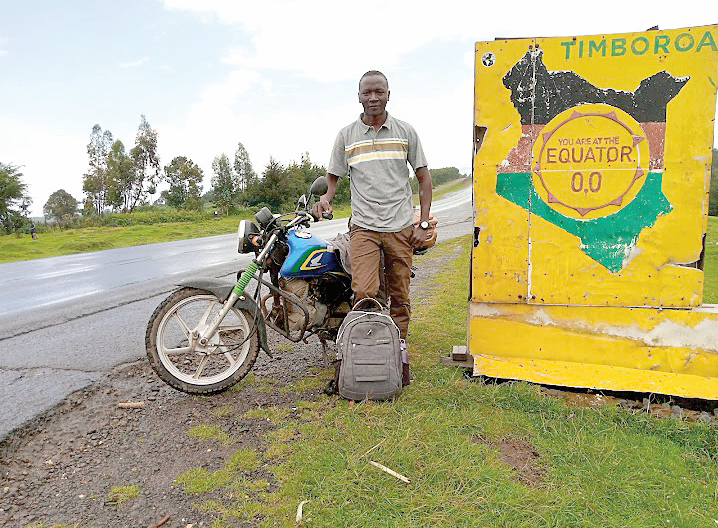Timboroa’s huge growth stride after post-poll violence

Deep within the Kenyan highlands, where the air is freezing cold and the land beams with a life-giving green, lies Timboroa, a small town with a big story.
Timboroa lies along the Equator, connecting the meeting point of Timboroa and Tinderet forests. It is located in Baringo county near the border with Uasin Gishu.
The residents of this town wake up every morning to a thick fog, a characteristic of the highland climate. Beyond its bamboo-covered hills and icy mornings, the town is a living monument to resilience, rebirth, and peace.
Timboroa is one of many towns that have been affected by post-election violence, ever since the 1990s up to 2007 skirmishes.
Nancy Wanjiru, a resident of Timboroa has witnessed what has been happening in the town for years. There were clashes between the people of different tribes, mostly the two dominant communities who lived in the area.
“Due to those disagreements people started fighting and chasing other tribes out of that place, which led to people burning other’s properties in 1993,” Wanjiru recalls.
Darkest hour
During post-election violence, many people were often displaced from Timboroa and others moved away many more lost their properties. Then after that, things would settle for a while and people lived in peace for some time.
“In 1997, the war started again due to the tribal differences and also political differences,” Wanjiru adds.
In 2007, Timboroa faced its darkest hour. Like many parts of Kenya, the town was ravaged during the post-election violence that followed the disputed presidential elections. Timboroa was reduced to rubble as ethnic tensions spiralled into chaos.
“Many people died and there many rape cases. People were shot with poisonous arrows which brought a lot of complications. The whole centre of Timboroa was burned to ashes leaving no building standing,” Wanjiru laments.
Homes were torched, farms abandoned, and families torn apart. By the time the violence receded, the town was unrecognisable, its people scattered, its fields unattended, and its future uncertain.
The 2007 Post-election aftermath was so depressing. Many elderly people died due depression after losing their loved ones and properties. These also led to people developing illnesses such as high blood pressure and diabetes due to high levels of stress and depression.
“We were left with nothing. Not even a toilet was spared. More than half of the population were left homeless with not even clothes to change,” she says.
But if destruction came swiftly, so did the spirit to rebuild. Timboroa’s residents began trickling back in 2008. What awaited them was devastation, but also a deep yearning to restore their town—not just the buildings, but the relationships.
“After all that we were able to move on slowly. There were well-wishers supporting us with food and clothes. The government and some NGOs also came in to help all those affected by the war,” she recollects.
The government helped those displaced to re-build houses. They provided tents to sleep in and people started building their lives from there.
As days passed the local forum grew into a peace committee that brought together elders, youth, women’s groups, and local leaders across ethnic lines. The people learned to live together no matter their differences, tribe or status.
Timboroa’s geography is as remarkable as its history. At 9,557 feet above sea level, it is one of the coldest inhabited places in Kenya comparable only to parts of the Mt Kenya region.
Fine farmlands
For months, especially between June and August, a thick fog blinds the town in an unreal mist. Yet, the chill contradicts the richness of the land.
“Timboroa is very cold from March to December but the cold temperature between June and August is extreme,” Wanjiru says.
Timboroa is well known for its fertile field, with farmers growing potatoes as their main cash crop.
“Farmers here grow potatoes- Shangii and Nyayo varieties mostly, we plant pyrethrum and horticultural crops like cabbages,” says Wanjiru, adding that the cold weather slows down pests and the altitude gives the crops a distinct taste, which is why Timboroa potatoes are so sought after.
Because of the weather too not all animals can survive in Timboroa. Farmers have opted to rear animals such as Merino sheep as they have fine wool, which provides excellent insulation.
Once a leading producer of pyrethrum before market prices plummeted in the early 2000s, Timboroa has now shifted its agricultural focus. Alongside potatoes, many farmers have embraced dairy, sheep farming, and even bamboo harvesting, a nod to the town’s very name, derived from the Kalenjin Tim-boroowon, meaning “a forest full of long ropes.”
Today, Timboroa is a model of post-conflict recovery. Its roads have been repaired, schools reopened, and health facilities upgraded. The once-blackened walls have been replaced with vibrant homes and shops. And more importantly, its people have embraced a culture of peace.
Children of families that once saw each other as enemies now sit side-by-side in school. Intermarriages are not just common, but celebrated. Community sports events, market days and tree-planting drives keep the spirit of togetherness alive.
As Kenya continues to grapple with questions of identity, politics, and justice, Timboroa stands as a quiet but powerful example. A town once torn apart by violence has become a beacon of what’s possible when communities choose healing over hate.















